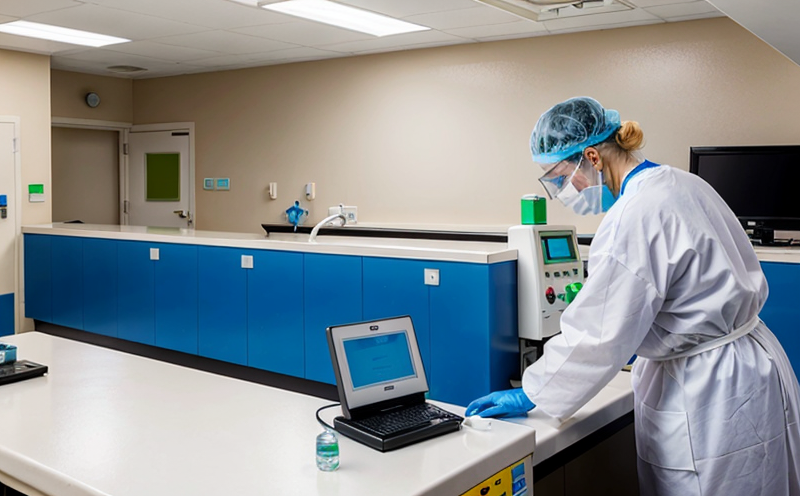Surface Swab Testing for Bacterial Contamination in Operating Rooms
In healthcare settings, ensuring a sterile environment is paramount to patient safety and successful surgical outcomes. Surface swab testing plays a critical role in identifying bacterial contamination on surfaces within operating rooms (ORs). This service involves collecting samples from various touch points using sterile swabs, transporting them to the laboratory for analysis, and providing detailed reports that help healthcare facilities maintain high standards of hygiene.
The process begins with selecting appropriate sampling sites such as door handles, light switches, countertops, anesthesia machines, and surgical instruments. Each swab is then transported to our accredited laboratory where it undergoes rigorous testing according to international standards like ISO 14698-2:2003 (Sterilization of Health Care Products) and ASTM E2751-18 (Standard Practice for Sterilization Monitoring).
Our team uses advanced microbiological techniques including growth media incubation, identification methods such as MALDI-TOF MS, and quantitative PCR assays to detect and quantify bacteria present on the swabbed surfaces. The results are reported back to healthcare facilities along with recommendations for cleaning protocols or additional disinfection measures.
Regular surface swab testing allows healthcare providers to monitor their current hygiene practices over time and identify trends that may indicate lapses in cleaning procedures. By implementing this service, hospitals can improve patient outcomes by reducing the risk of nosocomial infections associated with contaminated surfaces.
- Customer Impact: Regular surface swab testing provides actionable data to healthcare facilities, enabling them to implement targeted improvements where needed.
- Satisfaction Assurance: Our comprehensive approach ensures that all relevant areas are covered during each sampling event, leading to consistent and reliable results.
This service is essential for maintaining compliance with regulatory requirements set forth by organizations such as the Centers for Disease Control and Prevention (CDC) and Joint Commission International. It also supports continuous improvement initiatives aimed at enhancing overall patient care within surgical environments.
Why It Matters
Bacteria on surfaces in operating rooms can pose significant risks to patients undergoing surgery. Even a small number of bacteria can lead to infections if they come into contact with open wounds during procedures. Therefore, it is crucial for healthcare facilities to implement effective cleaning and disinfection strategies that prevent the spread of pathogens.
Surface swab testing helps identify contaminated areas so that appropriate actions can be taken promptly. For instance, if high levels of bacteria are detected on a particular surface, staff may need retraining or changes made to existing protocols. Additionally, this service supports evidence-based decision-making regarding the choice and application of disinfectants used in healthcare settings.
By leveraging surface swab testing services, hospitals can demonstrate their commitment to quality care and patient safety while meeting legal obligations related to infection control practices.
Quality and Reliability Assurance
To ensure the highest level of accuracy and consistency in our surface swab testing results, we adhere strictly to established methodologies outlined by relevant standards organizations. Our laboratory is accredited according to ISO/IEC 17025:2017 for clinical microbiology services.
The process starts with proper selection and preparation of the sampling sites within operating rooms. Sterile swabs are used exclusively to minimize cross-contamination risks. Once collected, these samples undergo rigorous processing steps including appropriate transport conditions and timeframes to maintain sample integrity.
Our team employs cutting-edge technologies for analysis, ensuring precise detection limits down to single colony forming units (CFUs) per square centimeter when necessary. This level of sensitivity is critical for identifying low-level contamination that could otherwise go unnoticed using less sophisticated methods.
The final step in our quality assurance process involves meticulous record keeping and reporting practices compliant with HIPAA regulations if required by the facility. All findings are summarized into easy-to-understand reports accompanied by recommendations tailored to each organization's specific needs.





